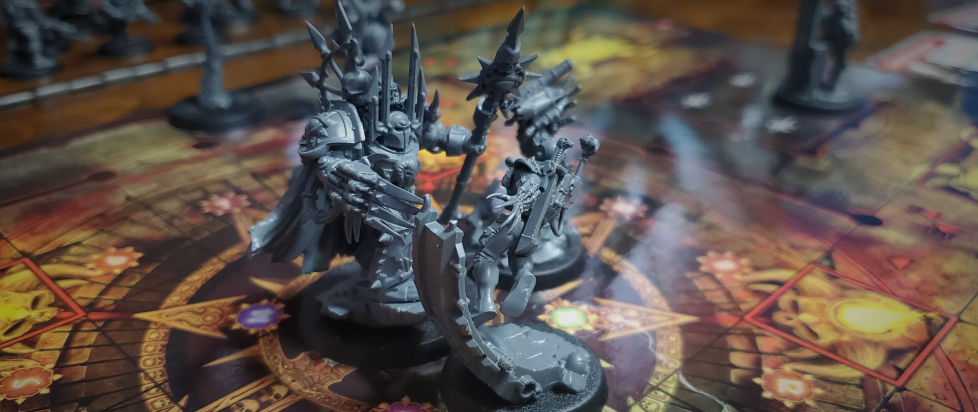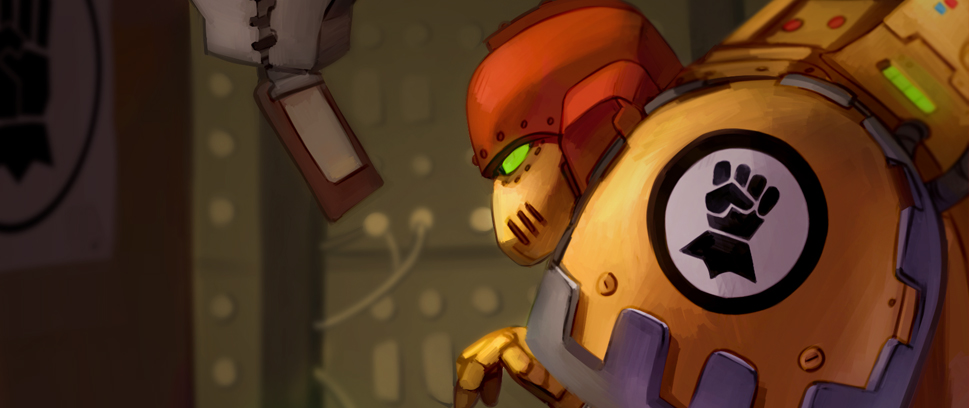
Stealth Mission: Exploring the Corners of Warhammer 40K in Execution Force
I see board games in the store and they always look so cool and then I buy them and bring them home, I’m so excited to open them, and then I play them, like, twice… This column is dedicated to the love of games for those of us whose eyes may be bigger than our stomachs when it comes to playing, and the joy that we can all take from games, even if we don’t play them very often.
Despite numerous video games, animated films, and enough novels to fill a bookstore, the various Warhammer properties from Games Workshop live and die on the tabletop. Warhammer is far from the only franchise that has expanded from tabletop gaming into other realms – Dungeons & Dragons, most notably, has given rise to video games, novels, movies, and much more.
D&D is, first and foremost, a roleplaying game, however, while the assorted iterations of Warhammer are war games at their heart, all about collecting, assembling, and painting little plastic army men, and then pushing them around on a big table, possibly at your friendly local game shop, because who has a dedicated table that big in their house?
In this way, Warhammer feels tethered to the table in a way that even D&D does not. No matter how far afield the franchise may grow – into novels, video games, action figures, plush toys, and so on – the tabletop will always be its true home. Which may be part of why Warhammer has been adapted into a frankly dizzying array of board games over the years.
Indeed, with the release of games like Warhammer Underworlds, the distinction between a “regular” Warhammer game and a Warhammer-branded board game can be difficult to pin down. Meanwhile, Games Workshop has entered into some sort of agreement with Barnes & Noble and apparently now Target as well to put out a series of various board games – all in uniform boxes – that seem to be released onto the shelves of those retailers at a rate of several per year. In fact, I recently wrote about one of these B&N exclusives, their streamlined take on Warhammer Quest, in this very column.
Perhaps in keeping with the origins of the franchise, these board game adaptations tend to fall into one of two permutations. There are variations on Warhammer Quest, a dungeon crawler that has seen some half-a-dozen iterations since 1995, and there are games in which two players go head-to-head, often leading asymmetric forces. Space Hulk may be one of the most iconic of these.
Execution Force is an outlier. Predating the Barnes & Noble partnership, Execution Force is a relic of a specific point in GW’s release history – in this case, the year 2015. It comes in a glossy box, as most of their contemporary games do, that is roughly the same dimensions as the majority of their recent Warhammer Quest offerings, or 2016’s Deathwatch: Overkill.

Deathwatch: Overkill is a helpful starting point to understanding Execution Force. The art and design is similar in both games, from the layout and fonts to the art on the boards, and both are filled with a pile of plastic miniatures from GW’s preexisting line that require at least a modicum of modeling skill to assemble. The key difference comes in how the game is played.
Like Space Hulk, Deathwatch: Overkill is an asymmetric head-to-head skirmish game pitting a player controlling Space Marines against Genestealers (think an off-brand version of the xenomorphs from Alien). Execution Force is something else. Players take control of four assassins, each with a different M.O. The game can ostensibly be played with any number of players (the box says “one to four”), but all four assassins are always used, with players dividing control of them up however they see fit.
In fact, as of this writing, I’ve only ever played the game solo. This means that Execution Force is a co-op game, with players combining their resources against the board, which is already an anomaly among Games Workshop’s non-Warhammer Quest board games. But Execution Force is also something even more unusual: a stealth game.
The premise of Execution Force is that your four assassins have to infiltrate a sanctum in order to prevent a Chaos sorcerer (more bad guys from the Warhammer 40,000 universe) from completing a ritual. You probably don’t have the time (or the hardiness) necessary to fight your way through all of the cultists that are standing between you and him, so you’ll have to sneak your way in, avoiding patrols where possible, and often fighting only as a last resort.
Stealth games are nothing new in the board game world, and there have been some interesting innovations in that direction that aren’t present in Execution Force – see, for instance, some of the hidden mechanics in a game like Specter Ops, which also shares at least some aesthetic DNA with this game. In Warhammer, though, a stealth game is virtually unprecedented.
Of course, because this is a game about assassination, you’ll have to fight sooner or later. While you’ll spend a lot of time avoiding cultists – or trying to kill them without being detected – you’ll ultimately make your way into the inner sanctum and have to face the big boss and his bodyguards. Even so, Execution Force feels like a very distinctive experience within the Warhammer 40,000 universe, and an example of the company taking greater risks with the design of its board games than has been its wont recently.
Unfortunately, Execution Force has been out of print for some time, victim of GW’s tendency to release boxed games in limited quantities and then stop production after a year or two. Here’s to hoping that the future will see them dipping their toes into more releases like this, which plumb aspects of the sprawling setting that are not as readily represented on a normal battlefield.
———
Orrin Grey is a writer, editor, game designer, and amateur film scholar who loves to write about monsters, movies, and monster movies. He’s the author of several spooky books, including How to See Ghosts & Other Figments. You can find him online at orringrey.com.




